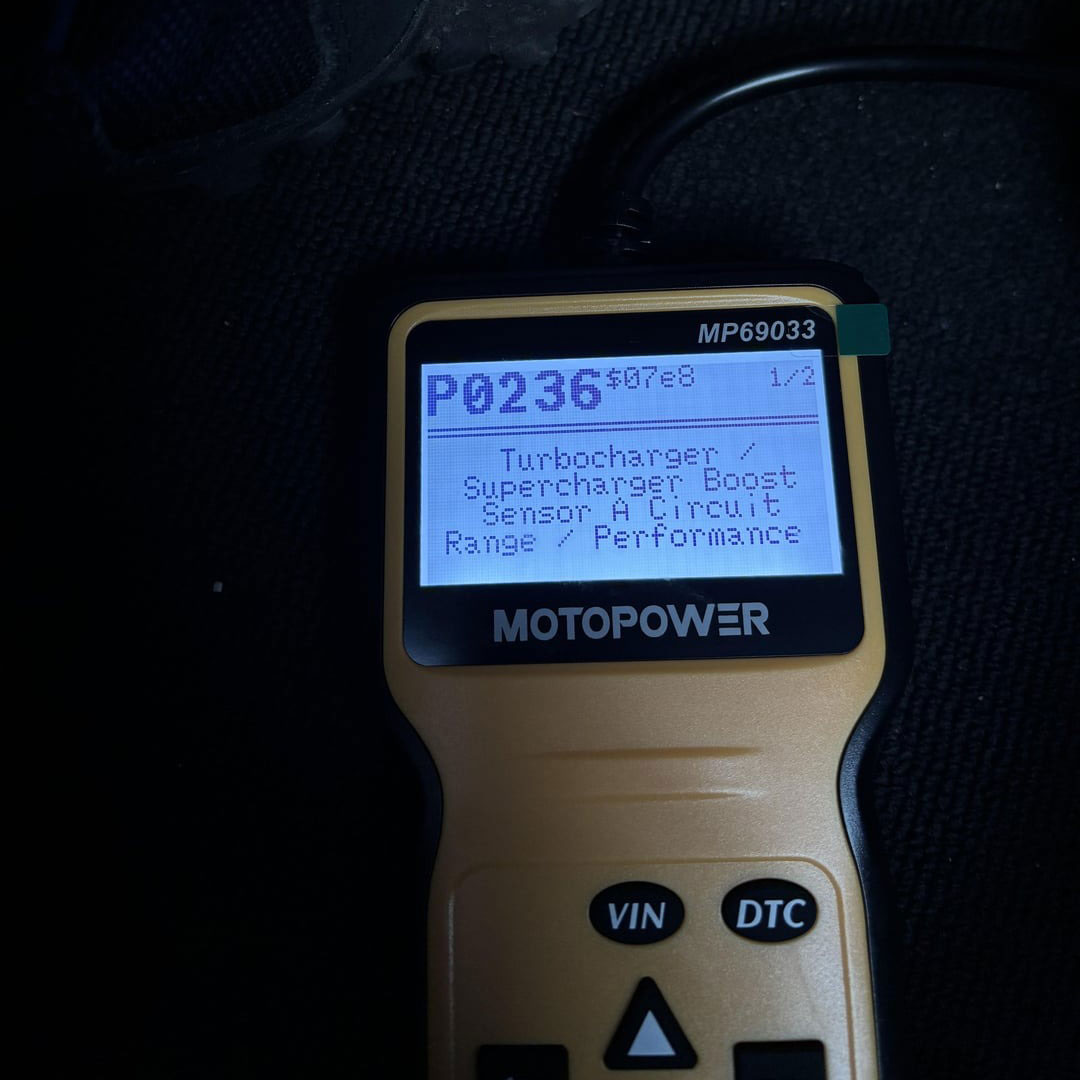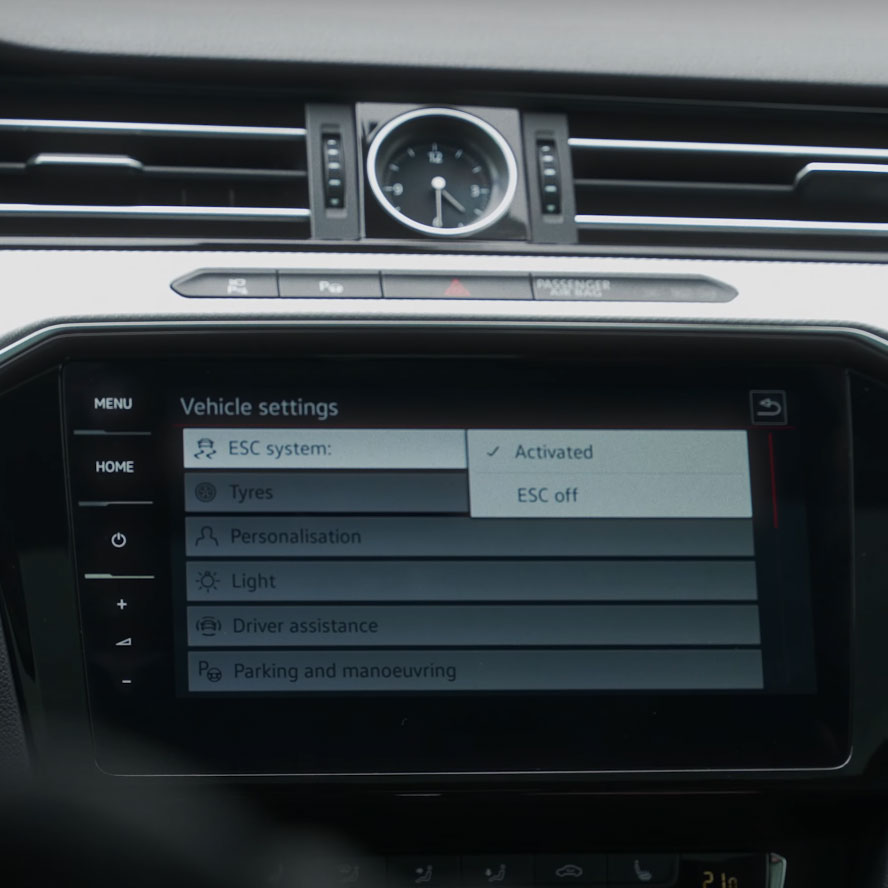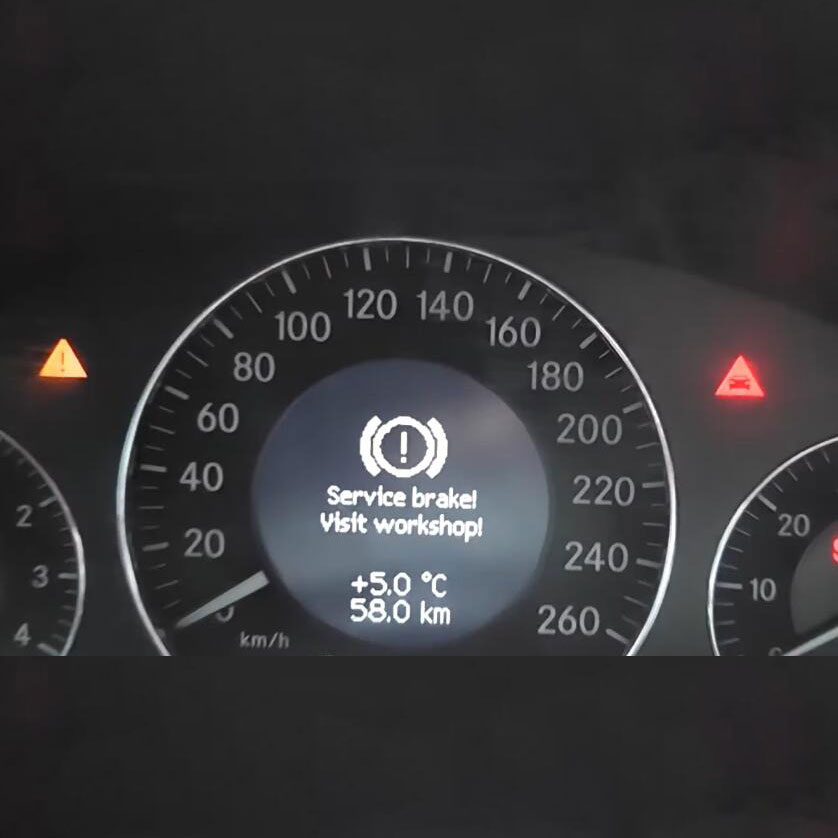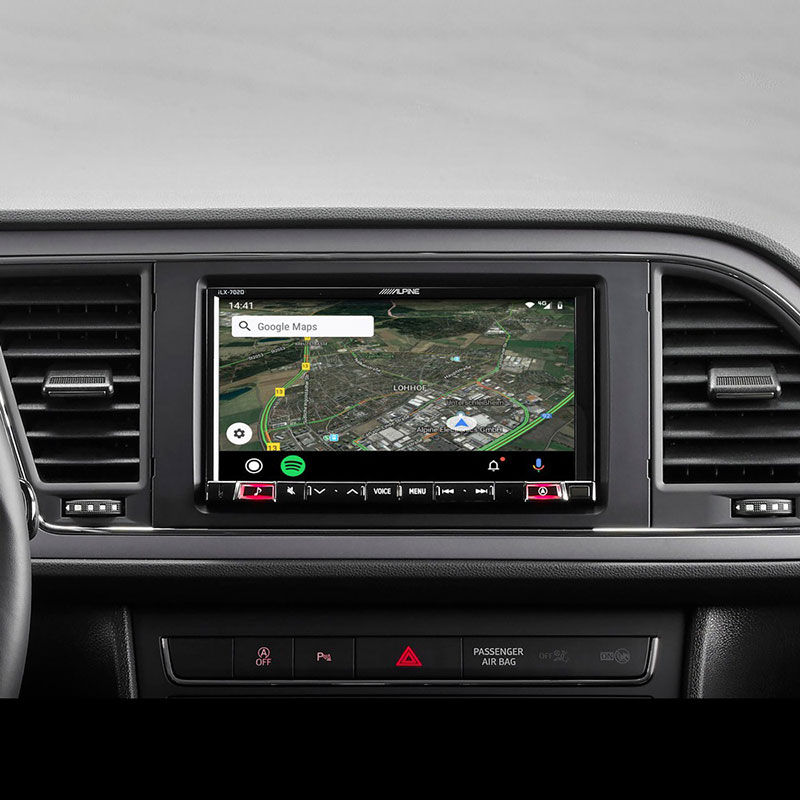
What Causes an Audi A4 P0300 Code and How to Fix It?
Contents
- 1. What Does the P0300 Code Mean on an Audi A4?
- 1.1. Why is it Important to Address a P0300 Code?
- 2. What are the Common Causes of the P0300 Code in an Audi A4?
- 2.1. Ignition System Issues
- 2.1.1. Faulty Spark Plugs
- 2.1.2. Failing Ignition Coils
- 2.1.3. Wiring and Connectors
- 2.2. Fuel System Problems
- 2.2.1. Clogged Fuel Injectors
- 2.2.2. Weak Fuel Pump
- 2.2.3. Fuel Filter
- 2.3. Vacuum Leaks
- 2.3.1. Intake Manifold Gaskets
- 2.3.2. Vacuum Hoses
- 2.3.3. PCV Valve
- 2.4. Engine Mechanical Issues
- 2.4.1. Low Compression
- 2.4.2. Valve Problems
- 2.4.3. Timing Belt/Chain
- 2.5. Sensor Malfunctions
- 2.5.1. Mass Air Flow (MAF) Sensor
- 2.5.2. Oxygen (O2) Sensors
- 2.5.3. Crankshaft Position Sensor
- 3. How to Diagnose the P0300 Code in an Audi A4
- 3.1. Preliminary Checks
- 3.1.1. Visual Inspection
- 3.1.2. Scan for Additional Codes
- 3.2. Ignition System Testing
- 3.2.1. Spark Plug Inspection
- 3.2.2. Ignition Coil Testing
- 3.2.3. Ignition Wiring
- 3.3. Fuel System Testing
- 3.3.1. Fuel Injector Testing
- 3.3.2. Fuel Pressure Test
- 3.3.3. Fuel Filter Check
- 3.4. Vacuum Leak Testing
- 3.4.1. Smoke Test
- 3.4.2. Manual Inspection
- 3.5. Engine Mechanical Testing
- 3.5.1. Compression Test
- 3.5.2. Leak-Down Test
- 3.6. Sensor Testing
- 3.6.1. MAF Sensor Testing
- 3.6.2. O2 Sensor Testing
- 3.6.3. Crankshaft Position Sensor Testing
- 4. How to Fix the P0300 Code in an Audi A4
- 4.1. Ignition System Repairs
- 4.1.1. Replacing Spark Plugs
- 4.1.2. Replacing Ignition Coils
- 4.1.3. Repairing Wiring and Connectors
- 4.2. Fuel System Repairs
- 4.2.1. Cleaning or Replacing Fuel Injectors
- 4.2.2. Replacing Fuel Pump
- 4.2.3. Replacing Fuel Filter
- 4.3. Vacuum Leak Repairs
- 4.3.1. Replacing Intake Manifold Gaskets
- 4.3.2. Replacing Vacuum Hoses
- 4.3.3. Replacing PCV Valve
- 4.4. Engine Mechanical Repairs
- 4.4.1. Engine Overhaul
- 4.4.2. Valve Repair
- 4.4.3. Timing Belt/Chain Replacement
- 4.5. Sensor Replacement
- 4.5.1. Replacing MAF Sensor
- 4.5.2. Replacing O2 Sensors
- 4.5.3. Replacing Crankshaft Position Sensor
- 5. Advanced Diagnostic Techniques for P0300 Code
- 5.1. Using a Scan Tool
- 5.1.1. Live Data Monitoring
- 5.1.2. Misfire Counter
- 5.2. Oscilloscope Testing
- 5.2.1. Ignition Waveform Analysis
- 5.2.2. Sensor Signal Analysis
- 5.3. Fuel Trim Analysis
- 5.3.1. Short-Term Fuel Trim (STFT)
- 5.3.2. Long-Term Fuel Trim (LTFT)
- 6. Preventing Future P0300 Codes
- 6.1. Regular Maintenance
- 6.1.1. Spark Plug Replacement
- 6.1.2. Fuel Filter Replacement
- 6.1.3. Air Filter Replacement
- 6.2. Quality Fuel and Additives
- 6.2.1. Fuel Injector Cleaner
- 6.2.2. High-Octane Fuel
- 6.3. Regular Inspections
- 6.3.1. Vacuum Hose Inspection
- 6.3.2. Wiring Inspection
- 7. The Role of ECU, TCM, and BCM in Managing Misfires
- 7.1. ECU (Engine Control Unit)
- 7.1.1. Misfire Detection
- 7.1.2. Diagnostic Trouble Codes
- 7.2. TCM (Transmission Control Module)
- 7.2.1. Shift Quality
- 7.2.2. Communication with ECU
- 7.3. BCM (Body Control Module)
- 7.3.1. Electrical System Monitoring
- 7.3.2. Communication with Other Modules
- 8. Why Choose AutoExplain.com for Your Audi A4 P0300 Code Diagnosis and Repair?
- 8.1. Expert Remote Support
- 8.2. ECU Programming and Software Updates
- 8.3. Specialized Diagnostic Tools
- 8.4. Time and Cost Savings
- 8.5. Comprehensive Support for Complex Issues
- 9. Understanding Misfires and Their Impact on Your Audi A4
- 9.1. Performance Issues
- 9.1.1. Rough Idling
- 9.1.2. Reduced Power
- 9.2. Fuel Efficiency
- 9.2.1. Increased Fuel Consumption
- 9.2.2. Poor Mileage
- 9.3. Potential Damage
- 9.3.1. Catalytic Converter Damage
- 9.3.2. Engine Damage
- 10. FAQ About the P0300 Code on an Audi A4
- 10.1. Can I drive my Audi A4 with a P0300 code?
- 10.2. How do I find the exact cylinder causing the misfire?
- 10.3. Can a bad O2 sensor cause a P0300 code?
- 10.4. How often should I replace my spark plugs?
- 10.5. What is the first thing I should check when I get a P0300 code?
- 10.6. Can a vacuum leak cause a P0300 code?
- 10.7. How can AutoExplain.com help me fix a P0300 code?
- 10.8. What are the symptoms of a P0300 code?
- 10.9. Is it expensive to fix a P0300 code?
- 10.10. How do I test my ignition coils?
Here’s a comprehensive guide to understanding the Audi A4 P0300 code, random or multiple cylinder misfires detected. This guide explains common causes, diagnostic steps, and effective solutions. If you’re experiencing engine misfires and seeing this code, it’s crucial to diagnose the root cause accurately to prevent further engine damage. Let AutoExplain.com provide expert remote support for swift and professional diagnostics.
1. What Does the P0300 Code Mean on an Audi A4?
The P0300 code in an Audi A4 signifies that the engine’s control unit (ECU) has detected random or multiple misfires across different cylinders. This means one or more cylinders aren’t firing correctly, leading to rough idling, reduced power, and potential engine damage. Cylinder misfires happen when there is incomplete combustion in one or more of the engine’s cylinders.
1.1. Why is it Important to Address a P0300 Code?
Addressing a P0300 code promptly is essential to prevent catalytic converter damage, which can occur when unburnt fuel enters the exhaust system. Also, the longer you drive with misfires, the more likely you are to cause additional damage to other components like the spark plugs, ignition coils, and even internal engine parts. Immediate diagnostics and repair are crucial to maintain your Audi A4’s performance and longevity.
2. What are the Common Causes of the P0300 Code in an Audi A4?
Several factors can trigger a P0300 code in your Audi A4. Identifying the exact cause is crucial for an effective repair.
2.1. Ignition System Issues
Ignition system problems are frequent culprits.
2.1.1. Faulty Spark Plugs
Worn, fouled, or damaged spark plugs can prevent proper ignition. Spark plugs create the spark needed to ignite the air-fuel mixture in the combustion chamber. If they’re worn out or damaged, the spark will be weak or nonexistent, causing a misfire.
2.1.2. Failing Ignition Coils
A failing ignition coil provides insufficient voltage to the spark plug. Each cylinder typically has its own ignition coil, and when one fails, the corresponding cylinder misfires.
2.1.3. Wiring and Connectors
Damaged or corroded wiring and connectors to the ignition coils or spark plugs can interrupt the electrical signal.
2.2. Fuel System Problems
Fuel delivery issues can also lead to a P0300 code.
2.2.1. Clogged Fuel Injectors
Dirty or clogged fuel injectors restrict fuel flow, leading to a lean mixture and misfires. Fuel injectors spray fuel into the cylinders. If they become clogged, the engine won’t receive enough fuel, leading to a misfire.
2.2.2. Weak Fuel Pump
An aging or failing fuel pump may not deliver enough fuel to the engine, especially under load.
2.2.3. Fuel Filter
A clogged fuel filter restricts the amount of fuel that can reach the engine, resulting in misfires.
2.3. Vacuum Leaks
Vacuum leaks can disrupt the air-fuel mixture, causing misfires.
2.3.1. Intake Manifold Gaskets
Damaged or cracked intake manifold gaskets can allow unmetered air to enter the engine.
2.3.2. Vacuum Hoses
Cracked or disconnected vacuum hoses can create leaks in the system.
2.3.3. PCV Valve
A faulty PCV (Positive Crankcase Ventilation) valve can cause vacuum imbalances, leading to misfires.
2.4. Engine Mechanical Issues
Mechanical problems within the engine can also result in a P0300 code.
2.4.1. Low Compression
Low compression in one or more cylinders can be caused by worn piston rings, damaged valves, or cylinder head gasket leaks.
2.4.2. Valve Problems
Bent or burnt valves can prevent proper cylinder sealing.
2.4.3. Timing Belt/Chain
A worn or improperly timed timing belt or chain can affect valve timing, leading to misfires.
2.5. Sensor Malfunctions
Faulty sensors can provide incorrect data to the ECU, leading to misfires.
2.5.1. Mass Air Flow (MAF) Sensor
A dirty or malfunctioning MAF sensor can provide incorrect airflow readings.
2.5.2. Oxygen (O2) Sensors
Faulty O2 sensors can disrupt the air-fuel ratio.
2.5.3. Crankshaft Position Sensor
A failing crankshaft position sensor can cause timing and misfire issues.
3. How to Diagnose the P0300 Code in an Audi A4
Diagnosing a P0300 code requires a systematic approach to pinpoint the root cause. Here’s a step-by-step guide.
3.1. Preliminary Checks
Start with basic inspections.
3.1.1. Visual Inspection
Check for any obvious signs of damage, such as cracked hoses, loose connections, or damaged wiring.
3.1.2. Scan for Additional Codes
Use an OBD-II scanner to check for other related trouble codes. These codes can provide additional clues about the source of the misfire.
3.2. Ignition System Testing
Test the components of the ignition system.
3.2.1. Spark Plug Inspection
Remove and inspect the spark plugs. Look for signs of wear, fouling, or damage. Replace any plugs that appear problematic.
3.2.2. Ignition Coil Testing
Test each ignition coil using a multimeter to check for proper resistance. Alternatively, you can swap coils between cylinders to see if the misfire follows the coil.
3.2.3. Ignition Wiring
Check the ignition wires for damage, corrosion, or loose connections. Use a multimeter to check for continuity.
3.3. Fuel System Testing
Evaluate the fuel delivery system.
3.3.1. Fuel Injector Testing
Use a multimeter to check the resistance of each fuel injector. You can also use a stethoscope to listen to each injector and ensure it’s clicking, indicating it’s firing.
3.3.2. Fuel Pressure Test
Use a fuel pressure gauge to check the fuel pressure at the fuel rail. Compare the reading to the manufacturer’s specifications.
3.3.3. Fuel Filter Check
Inspect the fuel filter and replace it if it’s clogged or dirty.
3.4. Vacuum Leak Testing
Check for vacuum leaks.
3.4.1. Smoke Test
Perform a smoke test to identify vacuum leaks. This involves injecting smoke into the intake system and observing where it escapes.
3.4.2. Manual Inspection
Carefully inspect all vacuum hoses and intake manifold gaskets for cracks or damage.
3.5. Engine Mechanical Testing
Assess the engine’s mechanical condition.
3.5.1. Compression Test
Perform a compression test on each cylinder to check for low compression. Low compression can indicate worn piston rings or valve problems.
3.5.2. Leak-Down Test
A leak-down test can help identify the source of compression loss, such as leaking valves or piston rings.
3.6. Sensor Testing
Evaluate sensor functionality.
3.6.1. MAF Sensor Testing
Use a scan tool to monitor the MAF sensor’s readings. Compare the readings to the manufacturer’s specifications.
3.6.2. O2 Sensor Testing
Monitor the O2 sensor’s readings using a scan tool. Ensure the sensors are switching properly and responding to changes in the air-fuel mixture.
3.6.3. Crankshaft Position Sensor Testing
Check the crankshaft position sensor’s signal using a scan tool or an oscilloscope.
4. How to Fix the P0300 Code in an Audi A4
Once you’ve identified the cause of the P0300 code, you can proceed with the necessary repairs.
4.1. Ignition System Repairs
4.1.1. Replacing Spark Plugs
Replace worn or damaged spark plugs with new ones. Ensure the new plugs are properly gapped according to the manufacturer’s specifications.
4.1.2. Replacing Ignition Coils
Replace any faulty ignition coils. It’s often recommended to replace all coils at the same time to ensure consistent performance.
4.1.3. Repairing Wiring and Connectors
Repair or replace any damaged or corroded wiring and connectors. Ensure all connections are clean and secure.
4.2. Fuel System Repairs
4.2.1. Cleaning or Replacing Fuel Injectors
Clean the fuel injectors using a fuel injector cleaning kit, or replace them if they are severely clogged or damaged.
4.2.2. Replacing Fuel Pump
Replace the fuel pump if it’s not delivering sufficient fuel pressure.
4.2.3. Replacing Fuel Filter
Replace the fuel filter to ensure a clean fuel supply to the engine.
4.3. Vacuum Leak Repairs
4.3.1. Replacing Intake Manifold Gaskets
Replace damaged intake manifold gaskets to seal any vacuum leaks.
4.3.2. Replacing Vacuum Hoses
Replace any cracked or damaged vacuum hoses. Ensure all hoses are properly connected and secured.
4.3.3. Replacing PCV Valve
Replace the PCV valve if it’s faulty or stuck.
4.4. Engine Mechanical Repairs
4.4.1. Engine Overhaul
Address mechanical issues like low compression by overhauling the engine, which may include replacing piston rings, valves, and bearings.
4.4.2. Valve Repair
Repair or replace bent or burnt valves to ensure proper cylinder sealing.
4.4.3. Timing Belt/Chain Replacement
Replace the timing belt or chain and ensure it’s properly timed according to the manufacturer’s specifications.
4.5. Sensor Replacement
4.5.1. Replacing MAF Sensor
Replace the MAF sensor if it’s providing incorrect airflow readings.
4.5.2. Replacing O2 Sensors
Replace faulty O2 sensors to ensure proper air-fuel ratio control.
4.5.3. Replacing Crankshaft Position Sensor
Replace the crankshaft position sensor if it’s failing or providing an inaccurate signal.
5. Advanced Diagnostic Techniques for P0300 Code
For complex cases, advanced diagnostic techniques can help pinpoint elusive issues.
5.1. Using a Scan Tool
Utilize advanced features of a scan tool.
5.1.1. Live Data Monitoring
Monitor live data from various sensors to identify irregularities.
5.1.2. Misfire Counter
Use the misfire counter to identify which cylinder is misfiring most frequently.
5.2. Oscilloscope Testing
An oscilloscope can provide detailed analysis.
5.2.1. Ignition Waveform Analysis
Analyze ignition waveforms to identify issues with the ignition system.
5.2.2. Sensor Signal Analysis
Analyze sensor signals to identify anomalies or inconsistencies.
5.3. Fuel Trim Analysis
Analyze fuel trim data to identify lean or rich conditions.
5.3.1. Short-Term Fuel Trim (STFT)
Monitor short-term fuel trim to identify immediate fuel adjustments.
5.3.2. Long-Term Fuel Trim (LTFT)
Monitor long-term fuel trim to identify sustained fuel adjustments, which can indicate vacuum leaks or fuel delivery issues.
6. Preventing Future P0300 Codes
Preventive maintenance can help avoid future P0300 codes.
6.1. Regular Maintenance
Follow the manufacturer’s recommended maintenance schedule.
6.1.1. Spark Plug Replacement
Replace spark plugs at the recommended intervals.
6.1.2. Fuel Filter Replacement
Replace the fuel filter at the recommended intervals.
6.1.3. Air Filter Replacement
Replace the air filter regularly to ensure proper airflow to the engine.
6.2. Quality Fuel and Additives
Use high-quality fuel and fuel additives.
6.2.1. Fuel Injector Cleaner
Use fuel injector cleaner periodically to keep the fuel injectors clean.
6.2.2. High-Octane Fuel
Use the recommended octane fuel for your Audi A4.
6.3. Regular Inspections
Perform regular inspections of the engine.
6.3.1. Vacuum Hose Inspection
Check vacuum hoses for cracks or damage.
6.3.2. Wiring Inspection
Check wiring and connectors for damage or corrosion.
7. The Role of ECU, TCM, and BCM in Managing Misfires
The Engine Control Unit (ECU), Transmission Control Module (TCM), and Body Control Module (BCM) play crucial roles in detecting and managing misfires.
7.1. ECU (Engine Control Unit)
The ECU monitors various engine parameters to detect misfires.
7.1.1. Misfire Detection
The ECU uses crankshaft position sensor data to detect variations in engine speed, which can indicate a misfire.
7.1.2. Diagnostic Trouble Codes
When a misfire is detected, the ECU stores a diagnostic trouble code (DTC) and may illuminate the malfunction indicator lamp (MIL).
7.2. TCM (Transmission Control Module)
The TCM can be affected by engine misfires.
7.2.1. Shift Quality
Misfires can cause rough idling and reduced engine power, which can affect the TCM’s ability to control shift quality.
7.2.2. Communication with ECU
The TCM communicates with the ECU to coordinate engine and transmission operation. Misfires can disrupt this communication.
7.3. BCM (Body Control Module)
The BCM might not directly manage misfires, but it handles related functions.
7.3.1. Electrical System Monitoring
The BCM monitors the electrical system, and issues in the electrical system can sometimes contribute to misfires.
7.3.2. Communication with Other Modules
The BCM communicates with other modules in the vehicle, and it can relay information about system faults, including those related to misfires.
8. Why Choose AutoExplain.com for Your Audi A4 P0300 Code Diagnosis and Repair?
When dealing with a P0300 code on your Audi A4, getting expert assistance can make all the difference. AutoExplain.com offers specialized remote support and diagnostic services tailored to your needs.
8.1. Expert Remote Support
AutoExplain.com provides expert remote support to guide you through the diagnostic and repair process. Our experienced technicians can help you identify the root cause of the P0300 code and recommend the most effective solutions.
8.2. ECU Programming and Software Updates
We offer ECU programming and software updates to ensure your Audi A4’s engine management system is running optimally. This can resolve issues related to misfires and improve overall engine performance.
8.3. Specialized Diagnostic Tools
AutoExplain.com uses advanced diagnostic tools to accurately pinpoint the cause of the P0300 code. Our tools allow us to analyze live data, perform detailed sensor testing, and identify even the most elusive issues.
8.4. Time and Cost Savings
By using AutoExplain.com, you can save time and money on expensive repairs. Our remote support helps you avoid unnecessary trips to the mechanic and ensures that you only replace the parts that are actually faulty.
8.5. Comprehensive Support for Complex Issues
Whether you’re dealing with ignition system problems, fuel delivery issues, vacuum leaks, or engine mechanical problems, AutoExplain.com provides comprehensive support to resolve complex issues.
9. Understanding Misfires and Their Impact on Your Audi A4
Misfires can have a significant impact on your Audi A4’s performance and longevity.
9.1. Performance Issues
Misfires can cause rough idling, reduced power, and poor acceleration.
9.1.1. Rough Idling
The engine may shake or vibrate excessively when idling.
9.1.2. Reduced Power
The engine may lack power, especially when accelerating.
9.2. Fuel Efficiency
Misfires can decrease fuel efficiency.
9.2.1. Increased Fuel Consumption
The engine may consume more fuel than usual.
9.2.2. Poor Mileage
You may notice a decrease in the number of miles you get per gallon of fuel.
9.3. Potential Damage
Misfires can lead to additional damage to other components.
9.3.1. Catalytic Converter Damage
Unburnt fuel can damage the catalytic converter.
9.3.2. Engine Damage
Prolonged misfires can cause damage to the engine’s internal components.
10. FAQ About the P0300 Code on an Audi A4
Here are some frequently asked questions about the P0300 code on an Audi A4.
10.1. Can I drive my Audi A4 with a P0300 code?
Driving with a P0300 code is not recommended, as it can lead to further engine damage and reduced fuel efficiency. It’s best to diagnose and repair the issue as soon as possible.
10.2. How do I find the exact cylinder causing the misfire?
Use an OBD-II scanner to read specific cylinder misfire codes (e.g., P0301 for cylinder 1, P0302 for cylinder 2). The misfire counter on a scan tool can also help identify the most problematic cylinder.
10.3. Can a bad O2 sensor cause a P0300 code?
Yes, a faulty O2 sensor can cause incorrect air-fuel mixture readings, leading to misfires and triggering a P0300 code.
10.4. How often should I replace my spark plugs?
Spark plugs should be replaced according to the manufacturer’s recommended maintenance schedule, typically every 30,000 to 60,000 miles.
10.5. What is the first thing I should check when I get a P0300 code?
Start by visually inspecting the engine for any obvious signs of damage, such as cracked hoses or loose connections. Then, use an OBD-II scanner to read the trouble codes.
10.6. Can a vacuum leak cause a P0300 code?
Yes, vacuum leaks can disrupt the air-fuel mixture and cause misfires, leading to a P0300 code.
10.7. How can AutoExplain.com help me fix a P0300 code?
AutoExplain.com offers expert remote support, ECU programming, and specialized diagnostic tools to accurately diagnose and resolve P0300 codes.
10.8. What are the symptoms of a P0300 code?
Symptoms include rough idling, reduced power, poor acceleration, and decreased fuel efficiency.
10.9. Is it expensive to fix a P0300 code?
The cost to fix a P0300 code varies depending on the cause and the necessary repairs. Simple fixes like replacing spark plugs can be relatively inexpensive, while more complex repairs like engine overhauls can be costly.
10.10. How do I test my ignition coils?
You can test ignition coils using a multimeter to check for proper resistance. Alternatively, you can swap coils between cylinders to see if the misfire follows the coil.
Don’t let a P0300 code slow you down. Contact AutoExplain.com today via WhatsApp at +1(936)2896695 or email at [email protected] for expert technical support. Visit our website at AutoExplain.com. Our office is located at 1500 N Grant ST Sten Denver, CO 80203. Get the support you need to diagnose and fix your Audi A4 quickly and efficiently.


How to Deactivate ESC in Volkswagen, Audi, Skoda, or SEAT

Mercedes Benz ‘Service Brake Visit Workshop’ Warning? Here’s What Dealers Don’t Tell You!

How to Perform Seat Navigation Update? – A Comprehensive Guide for Technicians






